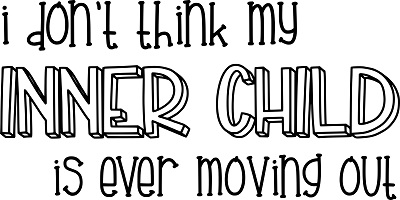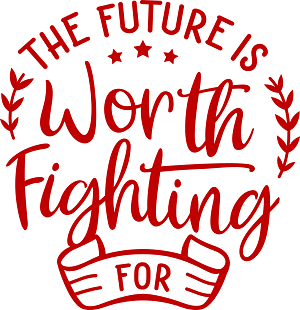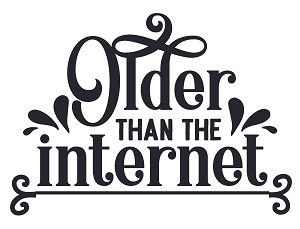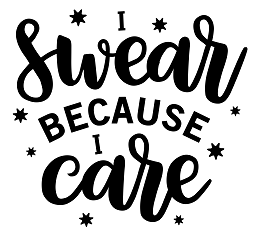 Coloring, along with other aspects of art, is something almost every person did while growing up. As the years went by, though, it was largely abandoned for other hobbies. This is unfortunate, as there’s research regarding how positively coloring as an adult can affect your mental health.
Coloring, along with other aspects of art, is something almost every person did while growing up. As the years went by, though, it was largely abandoned for other hobbies. This is unfortunate, as there’s research regarding how positively coloring as an adult can affect your mental health.
Studies on coloring mandalas have shown that they help to reduce anxiety and increase mindfulness in adults in ways other activities, such as free form doodling, did not. Overall, coloring these shapes had similar effects on the brain as meditation, suggesting coloring is one of the best relaxation activities you can do for yourself.
But after so long without any crayons or colored pencils in your grasp, how would you begin learning how to color once again? As simple as it sounds, there can be certain challenges you’ll face when trying to color once again, chief among them being your own adult inhibitions.
To help you on your journey, we’ve put together this simple guide showcasing a few different tips on how to color as an adult. We’ll cover different tools you can use for coloring as well as different ways you can color to make your work even more beautiful. Let’s get started.
1 – Tools to Use for Coloring
There are several different tools you can use to start coloring. For most people, the first one that comes to mind will be the crayon.
Going the Traditional Route with Crayons
Crayons are what most of us started out with, so it would make sense to return to them when you’re looking to try coloring again as an adult. Crayons are inexpensive, user-friendly, and come in virtually any color you can imagine. With an interesting natural texture to the lines, drawing with these art tools both looks and feels like nothing else.
On the other hand, the lines made with crayons are often fairly imprecise. Given that crayons can become dulled down quite quickly, either through frequent use or melting, they aren’t very precise unless frequently sharpened in a crayon sharpener.
Additionally, they cannot be blended in the same way other art tools can, meaning the color and intensity of the crayon is there to stay once it’s on the page.
Try Colored Pencils
Next, we have the colored pencil. Colored pencils are a particularly good choice given that most adults are more familiar with the feeling of holding a pencil rather than a crayon or other art tool. Being comfortable with the shape of your tool will help you express yourself better, and the increased precision with a smaller, sharper point helps increase focus and get the most out of a coloring project.
Blending colors also becomes possible, giving you a wider range of colors and the ability to seamlessly “iron out” any imperfections in your pictures by blending away the visible lines.
Though still expansive, there are generally less colors to choose from when searching for colored pencils versus crayons. For more particular colors, you might have to look harder. Layering colors could also be more difficult, as you’ll need to apply more pressure to the pencils so that each color shows through well.
Colored pencils are also easier to break than crayons, snapping under enough pressure or breaking the points. Additionally, colored pencils are often more expensive than crayons even if they are still fairly affordable, making it something to keep in mind when selecting an art tool.
Why Not Markers?
Markers are another option you might turn to when looking for coloring supplies. With bright, vibrant colors and a variety of shapes to choose from, markers offer a level of personalization other tools typically can’t match, giving you the option to work with fat markers like kids use or thin pen-like types.
Tips, as well, are varied in their thickness and point, giving you a number of choices for filling in different parts of a drawing. There’s also no need to apply a lot of pressure when using them, as markers are adept at covering whole pages worth of paper with little effort.
Unfortunately, markers have a tendency to bleed if applied heavily to a piece of paper, either through it onto the surface you’re coloring on or across the page. This means the chances of accidentally smearing your colors or drawing outside the lines of a picture are much higher than if you were using a different medium.
Additionally, the best types of markers are often very expensive. While cheaper markers will certainly work just fine, they often lack the same selection of colors, quality of ink, or precision found in fancier markers.
Get Artistic with Watercolor Pencils
Watercolor pencils are similar to colored pencils but adapted specifically for blending using water, helping to give your coloring some extra flare and more realistically create shaded and blended colors. The use of water with the pencils means layering is much easier than with traditional colored pencils, saving you energy when it comes to making your colors just right.
In addition to most of the same concerns with normal colored pencils (easier to break, higher price, etc.), the use of water with watercolor pencils introduces a new set of hazards into the mix.
Thin sheets of paper like most color books are printed with or that you might have in your printer normally will likely not hold up to being dampened during color, meaning you’ll have to buy thicker paper to color with. It can also take some time to fully become comfortable using the medium, as finding the right amount of water to blend with the pencil marks takes some trial and error.
Giving Gel Pens a Try
Gel pens are another option. Looking and feeling like the average pen, they offer an easy and comfortable coloring experience. Additionally, many gel pens have special glittery or metallic-looking inks, giving you a greater assortment of color types to choose from when coloring.
One drawback, however, is how quickly gel pens can run out of ink. In general, a gel pen will run dry faster than any other coloring tool, making frequent replacements a must. Additionally, the small point of these pens means more effort in filling in a drawing.
This can become even more troublesome if you apply a lot of pressure to a page, risking tearing it or making an unsightly indent in the paper. Like with normal pens, they might also “skip over” during lines while you color, leaving small white marks in otherwise unbroken lines of color.
While other coloring tools might exist, these are among the most common options. There’s no real “superior” coloring tool to be found, just the ones that are right for you. Experiment with a variety of different art mediums to find which you enjoy using the most while taking into consideration these different factors.
2 – Inside the Lines Versus Outside the Lines
Coloring inside the lines was one of the fundamental lessons of art we learned as children, but do we really need to follow the rules once we become adults? Like with most things related to art, most of it is simply personal preference and what makes you most comfortable. That being said, there are some advantages and disadvantages to each in terms of psychology.
Keeping Your Coloring Simple
In the previously mentioned 2005 study, it was found that the people tested responded best to coloring within the lines of mandalas (complex shapes within circles) as opposed to other coloring methods, including freeform doodling outside the lines. Overall, their anxiety levels were lower than other groups in the same experiment. This could suggest that a more structured coloring experience is better for helping to manage stress.
Don’t Forget About Individual Needs
On the other hand, this is only a single study. While dismissing the results would be foolish, assuming they apply to everyone equally would be just as bad. For some people, coloring outside the lines and making their own additions or alterations to drawings might be more relaxing than coloring within the lines, especially if their daily lives have a very rigid structure to them.
Ultimately, it will be up to the individual to find what helps them to relax the most through experimentation (meaning you have a reason to color as much as you could possibly want).
3 – Blending Colors
When using tools like colored pencils, being able to blend the colors is half the fun. However, it can often be harder to figure out just how to blend the colors in the first place. Luckily, it’s a fairly simple process that’s easy to master.
Crayola has a series of tips going over the materials and techniques that make blending colored pencil marks easy. The page outlines a few options people can choose from, such as solvents that melt the binding agents in colored pencil marks, colorless blender sticks, to white or other light-colored colored pencils, all of which can help to even out the surface of your coloring and erase unsightly pencil marks.
It also mentions that, for best results, an artist should blend from light to dark. This is because lighter colors are easier to blend and draw over if you feel like you want to change it, darker colors being harder to erase or cover over.
Additionally, warming your pencils before using them for drawing can help to soften the wax they’re made from, making coloring quicker and easier as well as blending due to the more malleable marks (this will not work nearly as well with crayons, as they are much more likely to melt completely when heated).
Finally, if using solvents or other liquids to blend with, make sure to allow your picture a chance to dry before doing any more work to it.
4 – Layering
The easiest way to make your drawings look more polished is by layering colors. This works with media like crayons, colored pencils, and even certain types of markers. In simplest terms, it relates to the way in which you color rather than what you color with.
Here are some tips to get accustomed to layering when you are coloring in coloring books or sketchbooks.
Just Go For it
First, simply color in your picture as much as you want, paying mind to color in a single direction (meaning, up and down, side to side, etc.). When you’ve finished that first layer of color, color over it again moving in the opposite direction to how you colored last time.
Immediately, you should see how the colors have become more vibrant with less white patches and more even colors. To finish up, apply a third layer of color going in the same direction as your first layer.
Adding on the Layers
You could do a fourth, fifth, or even sixth layer, as well, but by the time you’ve finished a third layer of color, additional layers won’t be very necessary. In addition to looking better all on its own, layering makes blending colored pencils or other applicable types of media that much easier.
You could even layer in different color combinations to lighten, darken, or blend them together for a unique look. The possibilities are endless.
All in all, coloring is a fun way to relieve stress and make beautiful artwork. Whether it’s your first time coloring as an adult or you’ve been looking for some extra guidance in making your art even more spectacular, hopefully these tips have helped you on your way.
All that’s left is to put them to the test, so grab a coloring book and your tool of choice and get to creating.


